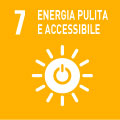- Docente: Giovanni Franceschini
- Crediti formativi: 6
- SSD: ING-IND/32
- Lingua di insegnamento: Inglese
- Moduli: Giovanni Franceschini (Modulo 1) Stefano Nuzzo (Modulo 2)
- Modalità didattica: Lezioni in presenza (totalmente o parzialmente) (Modulo 1); Lezioni in presenza (totalmente o parzialmente) (Modulo 2)
- Campus: Bologna
- Corso: Laurea Magistrale in Electric vehicle engineering (cod. 6713)
-
Orario delle lezioni (Modulo 1)
dal 15/09/2025 al 30/10/2025
-
Orario delle lezioni (Modulo 2)
dal 03/11/2025 al 18/12/2025
Conoscenze e abilità da conseguire
The course aims to provide a deep knowledge on the vector control of AC electric motors. At first, starting from dynamic equation, a control model on d-q axes of the following AC machines will be obtained: AC and DC Brushless Motor; Induction Motor; Synchronous Reluctance Motor; IPM Motor Using modern simulation methods based on Matlab/Simulink tools participants will learn how to design the main control architecture scheme for torque/velocity and position including the effect of torque disturbance as well.
Contenuti
Electromechanical energy conversion: Energy and Coenergy. Determination of force / torque delivered by an electric actuator. (ECTS 0,8; 8h )
Operating principle of the DC machine, permanent magnet and wound stator construction. Equivalent circuit and dynamic model. Mechanical characteristic, constant torque and constant power operating area. Torque and speed control. (ECTS 1; 10h )
Structure and operating principle of synchronous machines with or without permanent magnets. Stationary and dynamic models. Fields of application and comparison with the DC drives. (ECTS 1,5; 15h )
Structure and operating principle of the induction machine. Stationary and dynamic models. (ECTS 0,5; 5h)
Optimal control of electrical machines: MTPA, FW and MTPV trajectories, with special focus on the wound field synchronous machine (ECTS 1; 10h ).
Simscape modeling and simulation of torque and speed control (ECTS 1,2; 12h)
Testi/Bibliografia
On the TEAMS of the course (in compliance with copyright)
- The notes used by the professor during the lectures and numerical exercises
- the slides of the lessons
- The mathematical models introduced for numerical modeling and computer simulation with Matlab / Simulink
Not strictly necessary, in case of interest:
A. E. Fitzgerald , C. Jr. Kingsley , A. Kusko: "Electric machinery", McGraw-Hill Education, 2012.
A. Emadi, “Advanced Electric Drive Vehicles (Energy, Power
Electronics, and Machines)”, CRC Press; 1st edition (2014).
N. Mohan, T. M. Undeland, W. P. Robbins: “Power Electronics: Converters, Applications and Design”, John Wiley & Sons Inc;
Metodi didattici
The course is delivered in English and includes face-to-face lectures (theory and calculations) with connection also in streaming for students who follow from home via the "Teams" platform.
The lessons are carried out with the aid of multimedia systems and can also involve practical exercises in which students are divided in small groups and utilize software for the simulation of hybrid and electric traction systems (Matlab / Simulink), solve problems and discuss the results among themselves and with the teacher.
In addition, professors receive students by appointment for clarification and personalized tutoring.
The teaching material will be made available at the end of each lesson through the “Teams” platform.
Mathematical models will be used for numerical modeling and computer simulation with Matlab / Simulink
Modalità di verifica e valutazione dell'apprendimento
The exam will take place at the end of the course according to the official exam session calendar.
The examination is composed of a practical project and an oral discussion on the simulation and design of an electric vehicle.
The evaluation of the project is expressed out of thirty (a score greater than 30 results in obtaining a grade: 30 with honors).
The exam will last approximately 60 minutes.
The evaluation indicators are:
- Ability to use knowledge (25%)
- Ability to connect knowledge (25%);
- Mastery of technical language (15%);
- Ability to discuss topics (20%)
- Ability to deepen the topics (15%)
The grade will be determined and communicated at the end of the oral exam.
Strumenti a supporto della didattica
Simulation tools: Matlab; Simulink, Simscape.
Motor Catalogs.
Slides.
Orario di ricevimento
Consulta il sito web di Giovanni Franceschini
Consulta il sito web di Stefano Nuzzo
SDGs



L'insegnamento contribuisce al perseguimento degli Obiettivi di Sviluppo Sostenibile dell'Agenda 2030 dell'ONU.
